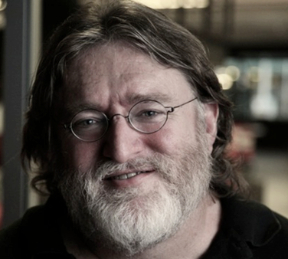
Rocket Lab is currently targeting no earlier than 01:44 hours, November 20, UTC, for lift-off of the company’s 16th Electron launch, the ‘Return to Sender’ mission.

This is Rocket Lab’s first recovery mission (they will be attempting to bring Electron’s first stage back under a parachute).
Launch Window:
- UTC: November 20 (01:44 – 04:34)
- NZT: November 20 (14:44 – 17:34) PT:
- November 19 (17:44 – 20:34) ET: November 19 (20:44 – 23:34)
There are launch backup opportunities available through November 30th should Rocket Lab need to stand down for any reason.
Mission Information
• ‘Return to Sender’ will deploy 30 satellites to a 500 km circular LEO for several small satellite operators including TriSept, Unseenlabs, Swarm Technologies, the University of Auckland, and Valve’s Gabe Newell.
• The mission will be Rocket Lab’s 16th launch overall and sixth mission of 2020.
• For the first time, Rocket Lab will also attempt to bring Electron’s first stage back from space under a parachute for a water landing. The mission will be the first time Rocket Lab has attempted to recover a stage after launch and is a major milestone in Rocket Lab’s pursuit to make Electron a reusable rocket to support an increased launch cadence for small satellite missions.
• For every person who watches the live launch webcast via www.rocketlabusa.com/live-stream, Valve’s Gabe Newell will donate $1 to Starship children’s hospital
More information about the mission is downloadable at this direct link…
A live webcast of the launch will be available approximately 15-20 minutes prior to the target T-0 time at this direct link…
Payloads…
DRAGRACER — Organization: TriSept

The DRAGRACER mission will test the effectiveness of new tether technologies designed to accelerate spacecraft reentry and reduce orbital debris at the conclusion of space missions. TriSept has completed the integration of a pair of qualified Millennium Space Systems 6U small satellites, one featuring the tether drag device and one without. The controlled spacecraft should deorbit in approximately 45 days, while the second spacecraft is expected to remain in orbit for seven to nine years, according to Tethers Unlimited, developer of the 70-meter-long (230 feet) Terminator Tape aboard the control satellite.
BRO-2 and BRO-3 — Organization: Unseenlabs

BRO-2 and BRO-3 are the second and third satellites in French company Unseenlabs’ planned constellation of about 20 satellites dedicated to maritime surveillance. The first BRO satellite was launched to orbit by Rocket Lab in August 2019. Unseenlabs’ constellation enables improved monitoring of activities at sea, such as illegal fishing and anti-environmental behavior. Thanks to a unique proprietary technology, the BRO satellites are the first to be able to independently and precisely locate and fingerprint Radio Frequency (RF) emitters all around the globe, day or night, in any weather condition, and without requiring any special embarked tracking device. With three satellites in orbit, Unseenlabs’ clients can now benefit from the shortest revisit time available on the satellite RF geolocation market.
APSS-1 — Organization: Auckland Program for Space Systems, The University of Auckland

The student-built Waka Āmiorangi Aotearoa APSS-1 satellite is designed to monitor electrical activity in Earth’s upper atmosphere to test whether ionospheric disturbances might be linked to earthquakes. The data from this mission will deliver deeper knowledge of these hard-to-access altitudes and drive understanding of how phenomena such as solar wind and geophysical events affect this atmospheric region.
Spacebees — Organization: Swarm Technologies

Swarm will launch the latest 24 1/4U SpaceBEE satellites to continue building out its planned constellation of 150 satellites to provide affordable satellite communications services to IoT devices in remote regions around the world. Swarm’s uniquely small satellites enable the company to provide network services and user hardware at the industry’s lowest cost and deliver maximum value to customers across a range of industries including maritime shipping, agriculture, energy, and ground transportation. The SpaceBEES will be integrated into two of Rocket Lab’s 3U Maxwell CubeSat dispensers for orbital deployment.
Mass Simulator: Gnome Chompski — Organization: Gabe Newell, Founder of Valve Software

Manufactured with support from multi-award-winning design studio Weta Workshop, the unique space component is additively manufactured from titanium and printed in the shape of Half-Life gaming icon Gnome Chompski. The mission serves as an homage to the innovation and creativity of gamers worldwide, and also aims to test and qualify a novel 3D printing technique that could be employed for future spacecraft components. The 150 mm gnome will remain attached to the Kick Stage during all mission phases and will burn up upon re-entry into Earth’s atmosphere during the de-orbiting process.
